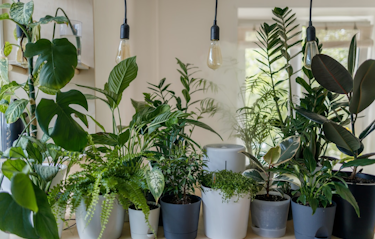
How To Trim Pothos
- Easy Care
- Araceae
- Large
- Evergreen Tropical Vines
We independently select everything we recommend. When you buy through our links, we may earn a commission.
According to the ASPCA (American Society for the Prevention of Cruelty to Animals), spider plants are not toxic to cats and dogs. Here’s what to know about growing this plant and what to do if your cat eats it.
Published on 22 August, 2023 by Oliver Rouane-Williams
Also known as chlorophytum comosum, ribbon plants, and snake plants, spider plants are popular houseplants because they are so easy to grow.
Eating spider plant leaves may cause digestive issues. Just because a plant is non-toxic does not guarantee that the animal will not get an upset stomach.
Cats and dogs often eat grass and plants in the wild and end up vomiting because they don’t have the enzymes in their stomach to properly digest the plant matter.
Pet owners must also consider what fertilizer and pesticide they use on their houseplants. When choosing a fertilizer or pesticide for ridding your plant of bugs, choose pet-friendly products or plan to keep your cat away from the plant after feeding it.
Chemical Attraction: These plants contain chemical compounds that can produce a mild hallucinogenic physical response similar to cat nip.
Playful: The long leaves and baby spider (spiderettes) that hang down look like a cat toy to the kitty. What cat would not want to bat at that?
Resemblance to Grass: Cats often eat grass to settle their stomach, and spider plants look like grass.

The tactics you employ to keep your cat out of the plant depend on whether kitty is eating, batting, or digging in your plants.
Citrus essential oils are repellants to detract some cats from digging into plants.
Create a plant room that the cats cannot get into.
Make a terrarium to keep your cat out.
Place plants on a windowsill or floating shelves out of the cat’s reach.
Plant foliage you want your cat to eat, such as cat grass or cat nip.
Put rocks in the planter above the soil to prevent a cat from digging in the dirt. Scat mats also work.
Move plants outside during warm weather.
Use a plant hanger or hanging basket to keep the plant out of reach.

One of the most common types of spider plants is chlorophytum comosum. The most popular variation includes Vittatum (Spider Ivy), the original variation of this popular plant. Two other common spider plants are the Bonnie and Variegatum.
All varieties of spider plants are non-toxic to cats.
Lilies are the most toxic plants to cats. There are nearly 100 species of lilies, and they are all toxic. Ingesting any part of the plant can cause immediate kidney failure and death.
Whether kitty likes to nibble on plants or leaves them alone, it’s always wise to choose pet-friendly plants that are non-toxic.
If you are a cat lover looking to add new plants to your home, consider one of these non-toxic plants:
Prayer Plant
Pet parents should avoid the following plants:
Alocasia
Aloe
Amaryllis
Caladium
Christmas Berry
Croton
Dieffenbachia
Eucalyptus
Ficus
Holly Berry
Jade
Lillies
Mistletoe
Monstera
Oleander
Philodendron
Poinsettia
Sago Palm
Snake Plant (Mother in Law's Tongue)
Delivered to your inbox every Saturday morning








